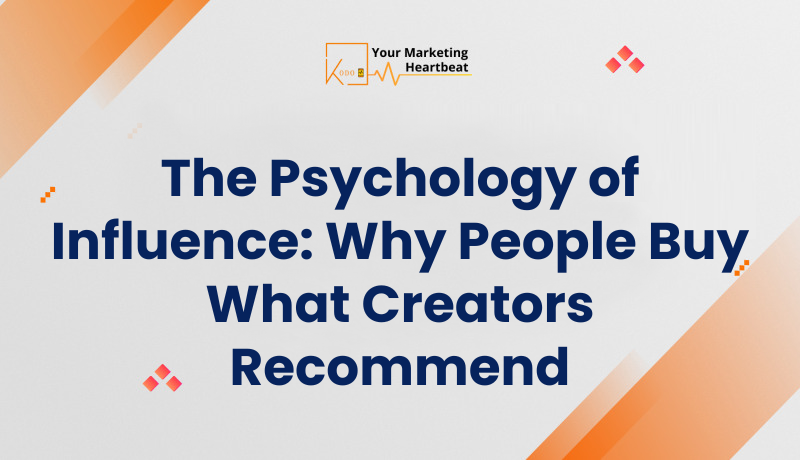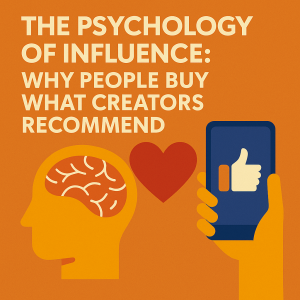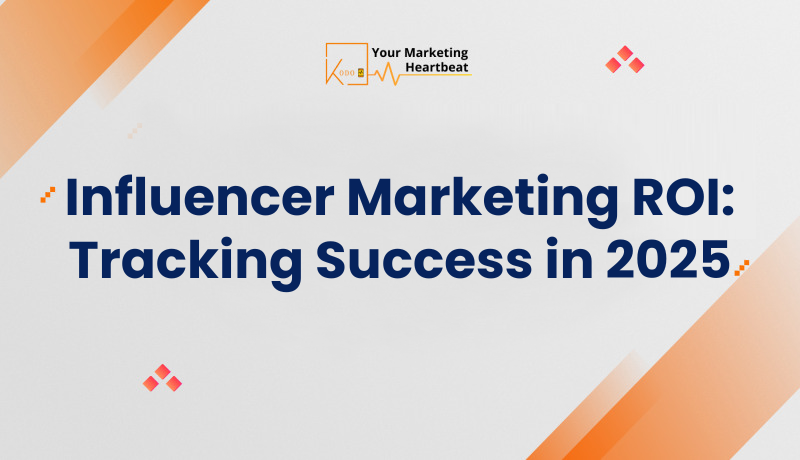
The Psychology of Influence: Why People Buy What Creators Recommend
Introduction
Why do we trust a stranger on Instagram more than a traditional ad?
Why does a creator’s 30-second video convince millions to buy — without any discount code or hard sell?
Welcome to the new era of marketing psychology, where trust is personal, not transactional.
In 2025, influencer marketing isn’t just a buzzword — it’s behavioral science in action. People no longer believe brands at face value. They believe people who believe in brands.
And that shift is what makes creator-driven marketing so powerful.

At Kodo Kompany, we’ve spent years helping brands decode how influence really works — not just who has followers, but why followers listen.
Let’s break down the psychology behind what makes audiences click “Add to Cart” after watching a creator’s recommendation.
1. People Follow People, Not Brands
The human brain is wired for connection, not commerce.
Neuroscience shows that when people see familiar faces or relatable emotions, their brain releases oxytocin — the same “trust hormone” involved in personal relationships.
That’s why a creator’s unfiltered product story feels 10x more trustworthy than a polished corporate ad.
Creators don’t talk at audiences; they talk to them — and that conversational tone creates an instant bond.
Example:
When a travel vlogger says, “This backpack made my 8-hour layover bearable,” it doesn’t sound like a promotion.
It sounds like advice from a friend who’s been there.
💡 Kodo Insight:
In 2025, brands that empower creators to tell real stories (not scripts) will dominate engagement and conversions.
2. Social Proof: The Invisible Persuader
We’re social creatures who look for cues before we act — a phenomenon psychologists call social proof.
When we see others using, loving, and endorsing something, our subconscious says, “If it worked for them, it’ll work for me.”
That’s the heart of influencer marketing.
Every like, comment, or testimonial acts as a trust signal.
According to a 2025 Nielsen study:
88% of consumers trust recommendations from influencers as much as from friends and family.
Creators provide instant validation in a sea of marketing noise.
Their endorsement doesn’t just sell a product — it sells belonging.
💡 Kodo Insight:
Show audiences not just what your product does — show who it connects with.
3. Authenticity Beats Authority
Audiences are done with filters — literally and metaphorically.
In 2025, authenticity is the new authority.
People don’t expect creators to be perfect; they expect them to be real.
They want messy unboxings, honest reviews, and genuine reactions — not studio-quality ads.
Example:
A skincare creator admitting, “This product didn’t work for me overnight, but after 3 weeks, it changed my routine,” builds more trust than any “miracle” claim.
Brands like The Derma Co and Mamaearth have seen massive growth because their influencer networks focus on experience-driven trust, not exaggerated results.
💡 Kodo Insight:
The secret ingredient in every high-ROI influencer campaign? Honesty that feels human.
4. The Parasocial Relationship Effect
Ever felt like you know your favorite YouTuber — even though you’ve never met them?
That’s called a parasocial relationship, and it’s one of the strongest drivers of influencer success.
Psychologists define it as a one-sided emotional bond viewers form with creators.
When a fan sees daily updates, shared routines, or personal confessions, they start viewing the creator as a friend or confidant.
So, when that creator says, “You should try this app — it really helped me,” the recommendation feels personalized, not promotional.
Example:
Creators like Komal Pandey or BeerBiceps have built massive trust by blending life, learning, and lifestyle — not just sponsored content.
💡 Kodo Insight:
Creators don’t sell to followers — they inspire their community. That’s the difference between influence and advertising.
5. The Power of Mirror Neurons
Here’s where neuroscience gets fascinating.
Our brains contain mirror neurons — cells that make us mimic emotions or actions we observe.
When a creator smiles while using a product, the audience’s brain subconsciously mirrors that emotion.
We feel the experience — and that emotional resonance increases the likelihood of action.
Example:
That’s why ASMR creators or fashion try-on reels drive such high engagement — they trigger sensory empathy, not just curiosity.
💡 Kodo Insight:
Every scroll is emotional. Every expression counts. Brands win when they make people feel the use case.
6. Scarcity, FOMO & the Power of Timing
Psychology tells us that scarcity creates urgency.
When influencers use phrases like “only 3 days left” or “limited drop,” they’re triggering the FOMO (Fear of Missing Out) bias.
In 2025, short-form video algorithms amplify this effect — audiences see the same product repeatedly across creators and start fearing they’re missing a trend.
Example:
Remember the “dot water bottle” or “mini humidifier” trend?
They weren’t revolutionary — they were viral through collective timing.
💡 Kodo Insight:
FOMO still works — but combine it with JOMO (Joy of Missing Out) messaging to stay authentic and ethical.
Example: “You don’t need every product, but this one will actually make your mornings easier.”
7. Authority by Association
When trusted creators align with your brand, their credibility rubs off on you.
This is called “borrowed authority.”
For startups or emerging businesses, this psychological principle can fast-track brand positioning.
If your product is endorsed by a respected niche creator, audiences assume it’s been vetted by an expert community.
Example:
A financial influencer recommending a fintech app can instantly raise perceived legitimacy — no large ad spend required.
💡 Kodo Insight:
In 2025, influencer selection isn’t about follower count — it’s about credibility compatibility.
8. Storytelling: The Emotional Currency of Influence
People forget statistics but remember stories.
And creators are master storytellers.
When influencers weave your product into their life journey — not as a prop, but as part of a meaningful story — your brand becomes part of their audience’s narrative.
Example:
A fitness creator sharing how a brand helped them stay consistent during tough days connects far more than product specs ever could.
💡 Kodo Insight:
Influencer marketing works because it humanizes your brand’s story — one video at a time.
9. The 2025 Shift: From Influencers to Trust Builders
The term “influencer” is evolving.
In 2025, creators are no longer just promoters — they’re trust architects.
Audiences now expect creators to:
-
Be transparent about collaborations
-
Focus on value, not volume
That’s why long-term partnerships outperform one-time posts.
Brands investing in creator communities instead of creator campaigns see better ROI — not just in conversions but in brand perception.
💡 Kodo Insight:
The future belongs to brands that build ecosystems — not ads — around trust.
10. The Kodo Kompany Framework: Turning Psychology into Performance
At Kodo Kompany, we don’t just manage influencer campaigns — we engineer psychology-driven strategies.
Our data-backed framework focuses on:
-
Audience Mapping – Understanding who follows your creators and why.
-
Emotional Positioning – Crafting authentic stories aligned with audience values.
-
Behavioral Tracking – Measuring conversions through real-time engagement analytics.
-
AI Attribution – Connecting content interactions to actual sales or inquiries.
-
Long-Term Relationship Building – Transforming creators into brand advocates.
We’ve seen brands grow engagement by 4× and ROI by 2.7× using emotional storytelling and behavioral insights.
Because at the end of the day — it’s not about how many creators you use.
It’s about how deeply they connect.
Conclusion: Influence Is Emotional, Not Transactional
The psychology of influence is simple yet profound.
People buy from people they trust, relate to, and admire.
The secret lies in authenticity — not algorithms.
Because the future of influencer marketing won’t belong to the loudest voices…
It’ll belong to the most genuine ones.
At Kodo Kompany, we help brands go beyond influencer marketing — we help them build trust ecosystems powered by real human connection.
In a digital world flooded with noise, that’s how influence becomes impact.


